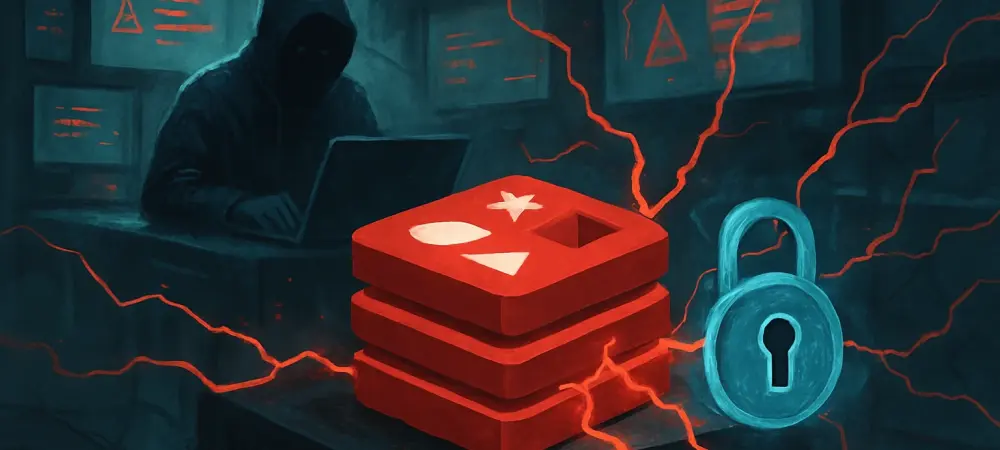I’m thrilled to sit down with Dominic Jainy, a seasoned IT professional whose expertise in artificial intelligence, machine learning, and blockchain also extends to critical insights into cybersecurity challenges in cloud infrastructure. With a newly discovered vulnerability in Redis—a widely used database technology—making headlines, Dominic’s perspective is invaluable. Today, we’ll dive into the details of this critical flaw, explore its far-reaching implications for cloud environments, and discuss actionable steps organizations can take to safeguard their systems. Our conversation will touch on the technical intricacies of the vulnerability, the scale of its potential impact, and the urgent need for mitigation in an era of widespread open-source reliance.
Can you break down what the RediShell vulnerability in Redis is and why it’s generating so much concern in the cybersecurity community?
Absolutely. RediShell, identified as CVE-2025-49844, is a critical Remote Code Execution vulnerability in Redis, a popular in-memory database used across countless cloud environments. What makes it so alarming is that it stems from a Use-After-Free bug—a type of memory corruption issue—that’s been lurking in the codebase for over 13 years. This flaw allows attackers to execute arbitrary code on a server by exploiting a malicious Lua script, essentially breaking out of the sandbox meant to contain such scripts. With a CVSS score of 10.0, the highest possible, it’s a stark warning of how devastating this could be if exploited.
What exactly is a Use-After-Free bug, and how does it contribute to the severity of this vulnerability?
A Use-After-Free bug happens when a program continues to use a piece of memory after it’s been freed or deallocated. In the case of RediShell, this error in Redis’s code creates a window for attackers to manipulate memory in ways that weren’t intended, ultimately allowing them to inject and run malicious code. It’s particularly dangerous because it’s hard to detect and can lead to full system compromise, giving attackers control over the host server. The fact that it’s been undetected for over a decade just shows how subtle yet catastrophic these bugs can be.
Given that Redis is so widely used, how extensive is the potential impact of this flaw across cloud environments?
The scale is staggering. Redis is embedded in about 75% of cloud environments, meaning most organizations relying on cloud infrastructure are potentially at risk. When you consider that around 330,000 Redis instances are exposed to the public internet, and roughly 60,000 of those have no authentication set up, you’ve got a recipe for disaster. These unprotected instances are low-hanging fruit for attackers, and even internally exposed systems aren’t safe if an attacker already has a foothold in the network.
What are the real-world consequences if an attacker successfully exploits this vulnerability?
The fallout could be severe. Once an attacker exploits RediShell using a crafted Lua script, they can escape the sandbox and gain full control over the server. From there, they might steal sensitive data like SSH keys or cloud credentials, wipe or encrypt critical information, or even install malware. Perhaps most concerning is the ability to move laterally within a cloud network, compromising additional systems and escalating the breach. It’s not just a single-point failure; it’s a gateway to broader damage.
Can you walk us through how an attacker might go about exploiting this vulnerability in a typical scenario?
Sure. The attack usually starts with the attacker identifying a vulnerable Redis instance, often one exposed to the internet without authentication. They’d then send a specially crafted Lua script that triggers the Use-After-Free bug, allowing them to break out of the sandbox and execute arbitrary code. Next, they might set up a reverse shell for persistent access, enabling them to come back at will. From there, they could harvest credentials, exfiltrate data, or use the compromised system as a stepping stone to other parts of the network. It’s a methodical, multi-step process that’s incredibly dangerous because of how much control it grants.
What immediate actions should organizations prioritize to protect their Redis deployments from this threat?
First and foremost, upgrade to the latest patched version of Redis. This can’t be overstated—patching closes the door on this specific vulnerability. Beyond that, enable authentication using the ‘requirepass’ directive to ensure only authorized users can access the instance. If Lua scripting isn’t essential for your operations, disable it entirely to eliminate that attack vector. Additionally, run Redis with non-root privileges, set up robust logging and monitoring, and restrict network access with firewalls. These steps collectively shrink the attack surface significantly.
How does the reliance on open-source technologies like Redis in cloud infrastructure amplify the risks of vulnerabilities like RediShell?
Open-source tech like Redis is a double-edged sword. On one hand, it’s incredibly powerful and widely adopted because it’s accessible and customizable—hence its presence in so many cloud setups. On the other, that widespread use means a single flaw can have a cascading effect across industries. Many organizations deploy these tools without fully hardening them, often skipping basic security configurations like authentication. Plus, the open nature means attackers can study the code for weaknesses. It underscores the need for community-driven efforts to identify and patch critical issues before they’re exploited at scale.
Looking ahead, what’s your forecast for the evolving landscape of cloud security given the challenges posed by vulnerabilities in open-source software?
I think we’re going to see a dual push in cloud security over the next few years. First, there’ll be greater emphasis on proactive vulnerability management—more automated scanning, better integration of security in the development lifecycle, and faster patching cycles. Second, I expect stronger collaboration between organizations, researchers, and open-source communities to tackle zero-day threats before they spiral out of control. But it’s also on companies to shift their mindset; security can’t be an afterthought. As cloud adoption grows, so will the sophistication of attacks, and staying ahead will require both technical innovation and cultural change within organizations.

